Being proactive about your breast health isn’t about fear or anxiety—it’s about awareness, wisdom, and empowerment. You deserve to feel confident and calm about the choices you make for your body.
Why I Focus on Breast HEALTH, Not Breast Cancer
Here’s something important: the energy we bring to our health matters—and science proves it.
Epigenetics and the brilliant work of experts like Dr. Bruce Lipton have clearly taught us that our thoughts can actually change the expression of our DNA. Read that again: your thoughts can change your DNA expression. This isn’t wishful thinking—it’s science.
THAT is why I focus on breast HEALTH versus battling breast cancer.
When we constantly focus on disease, screening for cancer, and fear-based thinking, we create stress. Stress raises cortisol, disrupts hormones, and weakens our immune system. But more than that—on an epigenetic level, that fear-based energy can actually influence which genes get turned on or off.
Instead, I choose to focus on breast HEALTH. I ask: What supports my breast tissue? What helps my lymphatic system flow freely? What keeps my hormones balanced? This positive, proactive approach creates a completely different energy in my body—and literally changes my biology at the cellular level.
I wrote extensively about this in my award-winning, best-selling book, “Create the Vitality You Crave: Epigenetics 101 to Unlock Your Healing Power.” Understanding epigenetics showed me that I’m not a victim of my genes—I’m the author of my gene expression.
Where we direct our attention matters profoundly. I choose health, vitality, and wellness—not fear and disease.
Awareness is not fear—it’s freedom.
My Journey: 20 Years Without a Mammogram—Following My Intuition
I haven’t had a mammogram in 20 years. This isn’t because I don’t care about my breast health—it’s actually because I care so deeply about it. But here’s the truth: it wasn’t research or knowledge that led me to this decision 20 years ago. It was my INTUITION.
Twenty years ago, I experienced a false positive mammogram. I went through the anxiety, the waiting, the biopsy. Even though it turned out to be nothing, something inside me said, “There has to be a better way.”
Then I looked at my family history. My aunt had breast cancer. And in the years since I stopped mammograms, both my cousin and my sister have been diagnosed. My cousin is still on chemotherapy today. My sister had a mastectomy.
Watching their journeys broke my heart—and strengthened my resolve. I knew I had to choose a different, healthier path. I couldn’t keep doing the same thing and expect a different result.
So I listened to my intuition. I dove deep into functional medicine and learned everything I could about truly supporting breast health—not just screening for disease, but creating an environment where disease couldn’t thrive.
Here’s what I did to create a healthy environment for my breasts:
- Maintain a healthy, non-inflammatory diet with little to no sugar
- Eat lots of cruciferous vegetables (broccoli, cauliflower, kale) to support healthy hormone metabolism
- Kept my hormones balanced through nutrition and lifestyle
- Exercised regularly to support lymphatic drainage and circulation
- Monthly lymphatic massage to keep things flowing
- Regular infrared sauna sessions to support detoxification
- Daily rebounding on my mini trampoline for lymphatic drainage
And here’s how I monitored my breast health safely:
- Thermography every year (no radiation, just monitoring)
- Monthly breast self-exams so I knew my body intimately
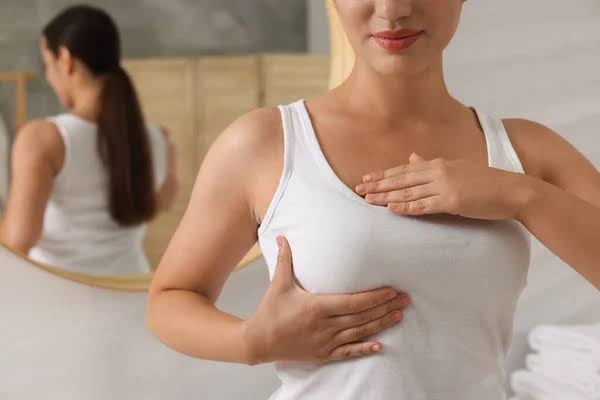
For 20 years, I focused on creating a healthy milieu—a thriving physical environment for my breasts. Then I added safe, radiation-free screening tools to monitor that health.
And now, the research has finally caught up with what my intuition knew all along. Now we have the studies showing that mammogram radiation accumulates in breast tissue and can actually cause cancer. Now we know that over half of women getting annual mammograms will experience false positives—just like I did. Now we have safer alternatives like QT Imaging.
Twenty years ago, I didn’t have all this research to back me up. I just had a knowing deep in my body that said, “Not this way.”
I listened.
And I want you to know: your intuition matters. Your body’s wisdom matters. You don’t have to wait for permission from the medical establishment to make choices that feel right for YOUR body.
The Simple Truth About Mammogram Risks
The Radiation Problem
Mammograms use X-ray radiation to take pictures of your breast tissue. That radiation doesn’t just disappear—it stays in your tissue and builds up over time.
Research from the National Institutes of Health shows that after just two to four years of regular mammograms and follow-up tests, women reach radiation levels that increase their risk of breast cancer.
Source: Radiation-Induced Breast Cancer Incidence and Mortality from Digital Mammography Screening: A Modeling Study, National Institutes of Health, PMC4878445
One major study found that annual screening of 100,000 women aged 40 to 74 years was projected to cause 125 breast cancer cases leading to 16 deaths, compared to 968 breast cancer deaths prevented.
Source: Annals of Internal Medicine, Vol 164, No 4, 2016
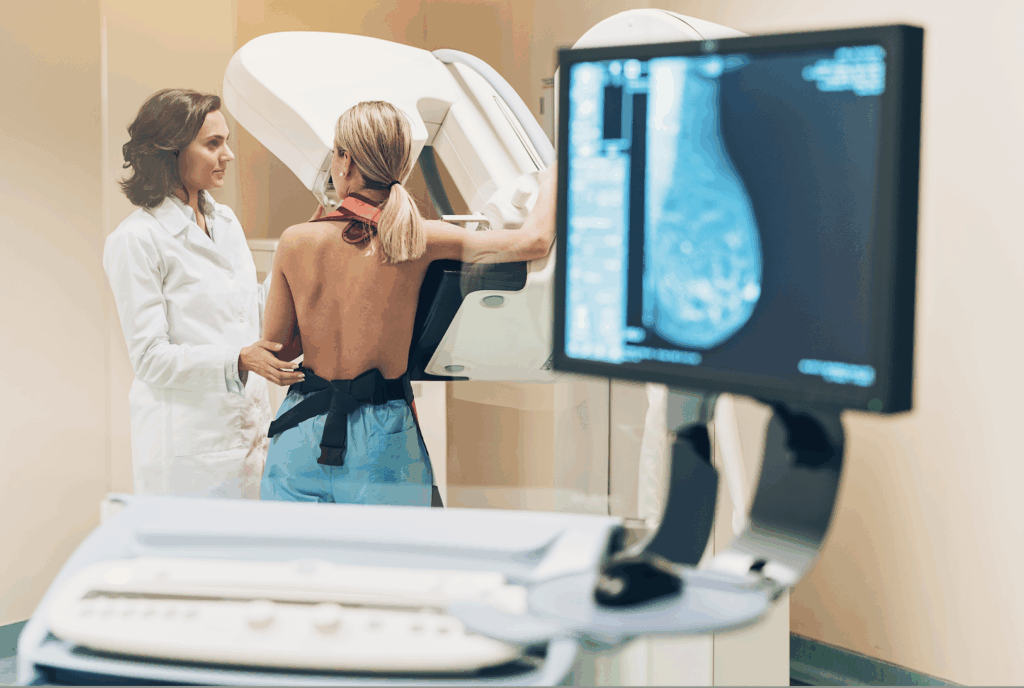
Who gets more radiation?
- Women with larger breasts receive higher radiation doses
- Women who need more frequent scans build up more cumulative exposure
- Women getting 3D mammograms with 2D mammograms together can receive 2 to 2.2 times more radiation
Source: Review of radiation dose estimates in digital breast tomosynthesis relative to those in two-view full-field digital mammography, The Breast Journal, PMC5064843
The False Alarm Problem
False positives are extremely common. Over ten years of annual mammograms, more than half of all women will get at least one false positive.
For every 20 positive findings in mammograms, only ONE is actually cancer. The other 19 are false alarms that lead to unnecessary anxiety, additional testing, and sometimes biopsies.
Studies show that women still reported negative psychological effects from false positives three years after receiving the results.
What a Leading Breast Surgeon Discovered
Dr. Jenn Simmons (one of my SHERO’s) spent 17 years as Philadelphia’s top breast surgeon—the first fellowship-trained breast surgeon in the city. She performed thousands of breast cancer surgeries and reviewed mammogram results every single day. Then she discovered functional medicine and learned something that shocked her. In 2019, she walked away from surgery at the height of her career.
“If you screen 2,000 women with mammography, you might save one woman’s life. But you will cause 10 women who didn’t need treatment to get treated for breast cancer anyway.” – Dr. Jenn Simmons
Dr. Simmons now teaches that mammograms don’t save lives or breasts statistically and have actually increased the risk of mastectomy. She describes the current system as “using a method that causes cancer to screen for cancer.”
A Revolutionary Alternative: QT Imaging
Dr. John C. Klock received over $15 million in funding from the National Institutes of Health to develop QT Imaging—a completely new way to screen for breast health using sound waves instead of radiation.
The QTscan received FDA 510(k) clearance and FDA Breakthrough Device designation for screening women at high risk for breast cancer.
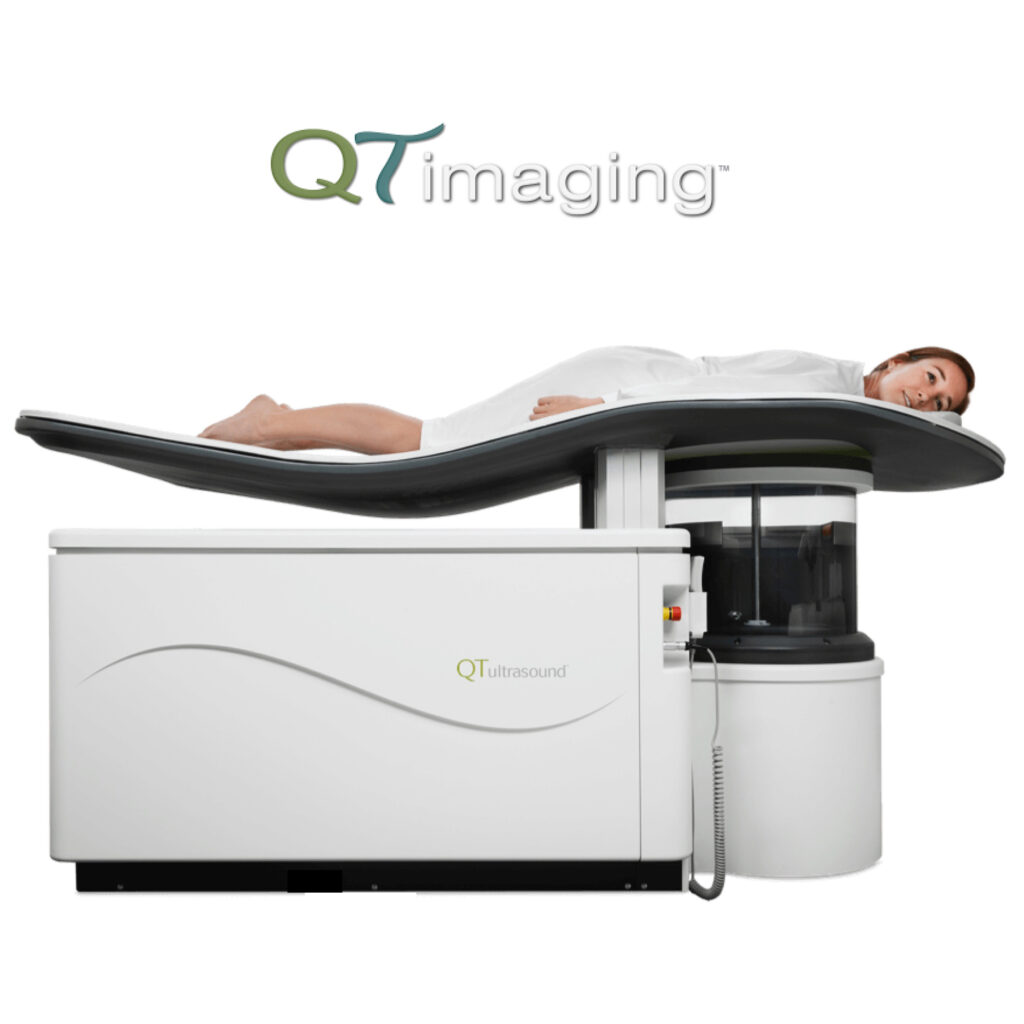
QT Imaging offers:
- NO radiation—uses sound waves (transmission ultrasound)
- NO painful compression—breast soaks in warm water
- NO contrast agents or injections
- 40x higher resolution than MRI
- Works exceptionally well for dense breasts
- Takes only about 15 minutes
- FDA-approved and available now
Find QT Imaging locations: www.qtimaging.com
Your Breast Health Toolkit: Start Simple, Then Advance
I believe in a layered approach. Start with simple tools you can use at home. Move to advanced imaging only when you need it—and when you do, choose QT Imaging instead of a mammogram.
1. Breast Self-Exam (Monthly)
Your own hands are powerful tools. About 40% of breast cancers are found by women themselves. Do a monthly exam to learn what’s normal for your body.
Source: Mammograms: Facts on ‘False Positives’, University of Rochester Medical Center
How to perform a breast self-exam:
- Look at your breasts in a mirror with arms at your sides, then raised
- Feel for lumps using the pads of your three middle fingers
- Check the entire breast and armpit area with light, medium, and firm pressure
- Do this a few days after your period ends, or pick the same day each month
2. AURIA Test (Every 6-12 Months)
The AURIA Test is a simple, at-home innovation that measures proteins or biomarkers in your tears—these can reveal subtle changes in breast tissue before any other tool does. It’s quick, non-invasive, and ideal for women who want to stay connected to their body’s signals. I’ve personally done my first AURIA test and highly recommend it.
Order your AURIA test: Learn more about AURIA
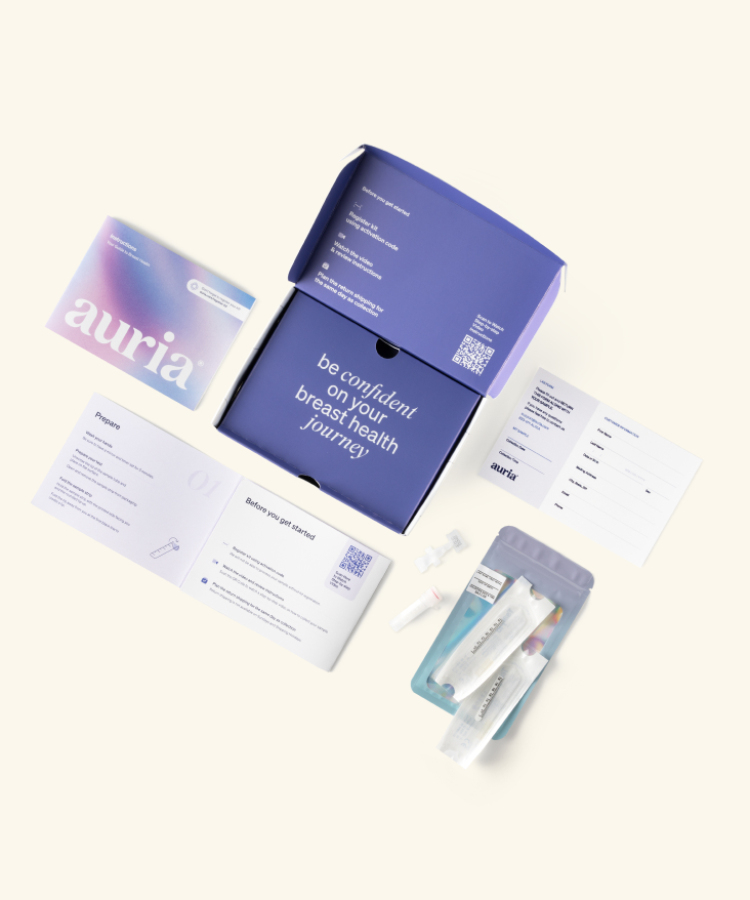
3. Thermography (Every Year)
Thermography uses a special heat-sensing camera to capture thermal patterns on your skin. Cancer cells require more blood flow to grow, and thermography detects those warmer areas that might suggest early tissue changes.
What makes it different:
- No radiation exposure
- No compression or discomfort
- Painless and quick
- Can reveal inflammation and blood flow changes
While thermography is FDA-approved only as an adjunctive screening tool, many women—including myself—find it invaluable when combined with other methods. I personally get thermography done every year as part of my breast health routine.
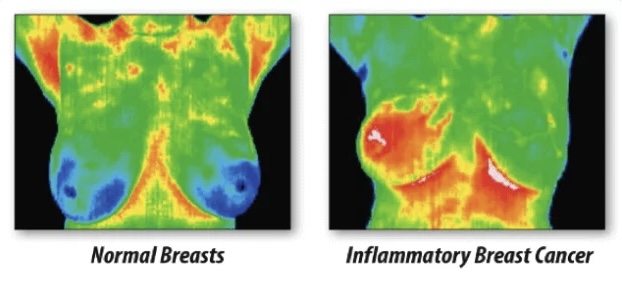
4. QT Imaging (When You Need Advanced Screening)
After you’ve done your simple at-home screening (BSE, AURIA, thermography), QT Imaging is the smart choice for advanced imaging—instead of a mammogram. This is the next-generation technology that represents the future of breast health screening.
Find a QT Imaging location near you: www.qtimaging.com
5. Ultrasound (If QT Imaging Isn’t Available Yet)
A good radiation-free alternative, especially for evaluating specific areas of concern or for women with dense breasts.
Simple Ways to Support Breast Health Daily
- Nourish your hormones naturally: Eat cruciferous vegetables (broccoli, cauliflower, kale), add fiber, and hydrate to help your liver clear excess estrogen (see last week’s blog for details)
- Move your body daily: Exercise supports lymphatic drainage and overall circulation
- Reduce caffeine and alcohol: Both can amplify breast tenderness and hormonal imbalances. Even worse, alcohol dramatically limits the liver’s ability to metabolize estrogens.
- Practice gentle breast massage monthly: Helps reduce congestion and improves lymph flow
- Use infrared sauna regularly: Supports detoxification pathways
- Rebound daily on a Mini trampoline to stimulate lymphatic drainage
- Prioritize self-care and rest: Stress raises cortisol, which can disrupt your hormonal balance
Final Thoughts: Reclaiming Calm and Confidence
Caring for your breasts is more than a medical routine—it’s a form of self-respect. By choosing tools that align with your values, your comfort, and your intuition, you give yourself the gift of confidence and peace of mind.
You deserve to feel safe, informed, and empowered—not fearful or pressured. Listen to your body, trust your instincts, and approach breast health as an act of grace, not anxiety.

Remember: awareness is not fear—it’s freedom.
Here’s to your breast HEALTH!
Warmest,
Lori
Important Note:
This information is for educational purposes. Always talk with your healthcare provider about what’s best for your individual situation.
Research Sources:
- Radiation-Induced Breast Cancer Incidence and Mortality from Digital Mammography Screening: A Modeling Study, PMC4878445
- Breast Cancer Induced by X-Ray Mammography Screening? A Review Based on Recent Understanding of Low-Dose Radiobiology, PMC5588356
- High Rate of False-Positives with Annual Mammogram, UC San Francisco, 2011
- Impact of a false positive screening mammogram on subsequent screening behavior, PMC5336525
- Review of radiation dose estimates in digital breast tomosynthesis, PMC5064843
- QT Imaging clinical research and FDA documentation
- Dr. Jenn Simmons, The Smart Woman’s Guide to Breast Cancer and public presentations
- Dr. Bruce Lipton, The Biology of Belief and epigenetics research